#how to outline
Explore tagged Tumblr posts
Text
🧩 How to Outline Without Feeling Like You’re Dying
(a non-suffering writer’s guide to structure, sanity, and staying mildly hydrated)
Hey besties. Let’s talk outlines. Specifically: how to do them without crawling into the floorboards and screaming like a Victorian ghost.
If just hearing the word “outline” sends your brain into chaos-mode, welcome. You’re not broken, you’re just a writer whose process has been hijacked by Very Serious Advice™ that doesn’t fit you. You don’t need to build a military-grade beat sheet. You don’t need a sixteen-tab spreadsheet. You don’t need to suffer to be legitimate. You just need a structure that feels like it’s helping you, not haunting you.
So. Here’s how to outline your book without losing your soul (or all your serotonin).
—
🍓 1. Stop thinking of it as “outlining.” That word is cursed. Try “story sketch.” “Narrative roadmap.” “Planning soup.” Whatever gets your brain to chill out. The goal here is to understand your story, not architect it to death.
Outlining isn’t predicting everything. It’s just building a scaffold so your plot doesn't fall over mid-draft.
—
🧠 2. Find your plot skeleton. There are lots of plot structures floating around: 3-Act. Save the Cat. Hero’s Journey. Take what helps, ignore the rest.
If all else fails, try this dirt-simple one I use when my brain is mush:
Act I: What’s the problem?
Act II: Why can’t we fix it?
Act III: What finally makes us change?
Ending: What does that change cost?
You don’t need to fill in every detail. You just need to know what’s driving your character, what’s blocking them, and what choices will change them.
—
🛒 3. Make a “scene bucket list.” Before you start plotting in order, write down a list of scenes you know you want: key vibes, emotional beats, dramatic reveals, whatever.
These are your anchors. Even if you don’t know where they go yet, they’re proof your story already exists, it just needs connecting tissue.
Bonus: when you inevitably get stuck later, one of these might be the scene that pulls you back in.
—
🧩 4. Start with 5 key scenes. That’s it. Here’s a minimalist approach that won’t kill your momentum:
Opening (what sucks about their world?)
Catalyst (what throws them off course?)
Midpoint (what makes them confront themselves?)
Climax (what breaks or remakes them?)
Ending (what’s changed?)
Plot the spaces between those after you’ve nailed these. Think of it like nailing down corners of a poster before smoothing the rest.
You’re not “doing it wrong” if you start messy. A messy start is a start.
—
🔧 5. Use the outline to ask questions, not just answer them. Every section of your outline should provoke a question that the scene must answer.
Instead of: — “Chapter 5: Sarah finds a journal.”
Try: — “Chapter 5: What truth does Sarah find that complicates her next move?”
This makes your story active, not just a list of stuff that happens. Outlines aren’t just there to record, they’re tools for curiosity.
—
🪤 6. Beware of the Perfectionist Trap™. You will not get the entire plot perfect before you write. Don’t stall your momentum waiting for a divine lightning bolt of Clarity. You get clarity by writing.
Think of your outline as a map drawn in pencil, not ink. It’s allowed to evolve. It should evolve.
You’re not building a museum exhibit. You’re making a prototype.
—
🧼 7. Clean up after you start drafting. Here’s the secret: the first draft will teach you what the story’s actually about. You can go back and revise the outline to fit that. It’s not wasted work, it’s evolving scaffolding.
You don’t have to build the house before you live in it. You can live in the mess while you figure out where the kitchen goes.
—
🛟 8. If you’re a discovery writer, hybrid it. A lot of “pantsers” aren’t anti-outline, they’re just anti-stiff-outline. That’s fair.
Try using “signposts,” not full scenes:
Here’s a secret someone’s hiding.
Here’s the emotional breakdown scene.
Here’s a betrayal. Maybe not sure by who yet.
Let the plot breathe. Let the characters argue with your outline. That tension is where the fun happens.
—
🪴 TL;DR but emotionally: You don’t need a flawless outline to write a good book. You just need a loose net of ideas, a couple of emotional anchors, and the willingness to pivot when your story teaches you something new.
Outlines should support you, not suffocate you.
Let yourself try. Let it be imperfect. That’s where the good stuff lives.
Go forth and outline like a gently chaotic legend 🧃
— written with snacks in hand by Rin T. @ thewriteadviceforwriters 🍓🧠✍️
Sometimes the problem isn’t your plot. It’s your first 5 pages. Fix it here → 🖤 Free eBook: 5 Opening Pages Mistakes to Stop Making:
#writing#writing advice#writeblr#writers on tumblr#writing tips#writing help#how to write#story structure#writing process#plotting tips#writing guide#writing blog#writing community#writing support#tumblr writing community#writing inspiration#storytelling tips#how to outline#writing resources#novel writing#outline tips#plotting a novel#writing craft#novel planning#write a book#drafting a novel#writing motivation#first draft advice#fiction writing#character arcs
2K notes
·
View notes
Text


Outline updated!
#writers on tumblr#writing#writeblr#creative writing#writers#writing life#writer#writers and poets#writerscommunity#writing blogs#writing update#outline#novel#novel writing#novel wip#how to outline#open to asks#chaotic academia#chaotic academic aesthetic#writing process#writing progress
32 notes
·
View notes
Text
Writing Tips: How I Outline
(Or: How I turn a list of random ideas into a plot outline.)
Saw this question pop up elsewhere and thought I'd put together my method, as someone who doesn't necessarily write her outlines the way your middle school English teacher probably taught, but I get something workable out of it in the end.
This goes for both fanfiction and original fiction.
Step 1: Throw Ideas at the Paper
I don't start out by trying to write an outline, beginning to end. Very rarely do I actually know the story start-to-finish already at this point, and even if I do (for example, a fairy tale adaptation I've been working on since college), I'm more likely to get hung up on what comes next and forget important details I want to remember.
So instead, just like those people who write individual scenes of their stories out of order and worry about maybe stringing them together later, I just write down ideas. I don't even necessarily try to keep them in rough plot order. The most important part of this step is just getting those ideas written down so I don't forget them.
To this end, I make a new document. I write a 1-2 paragraph summary at the top of what the basic idea is. Then I start a bullet list. Each idea gets its own bullet. Sometimes I'll have more to say on one idea, or have related ideas, and use sub-bullets to group them together visually. Every idea goes on the paper so it doesn't get forgotten.
(It's also worth noting that I say "paper," but I actually do this in Google Docs so I can add to it on the go via my phone if I have an idea away from my PC.)
Step 2: Start Grouping Related Ideas Together
This is still in the "throw ideas at the paper" phase, technically, but was worth its own step in the list.
Once the document starts getting long enough, it's time to start grouping things together. I add in section headers to make things easier to sort. I'll group ideas together that are related. I'll refine ideas via further sub-bullets. I may even start figuring out a rough plot order at this point—acts, narrative arcs, subplots, what have you. I still don't delete any ideas. Everything is valid (for now, at least).
You don't need to know things like story structure at this point. You only need to be able to recognize which ideas are related to each other.
Step 3: Organize Everything by Plot Order
This may have already been happening bit by bit leading up to this point, just by me grouping related ideas together or dropping new ideas into the list in their relative plot-position, but this is the point where I focus on really figuring out the order everything is going to go in.
Sometimes, my idea list is short enough that I can just cut-and-paste everything into a new plot order. More likely, though, I'll have to type it all up anew. When I do, I open a new document and move the old one to my other monitor (but you can also group the two windows side-by-side on a single monitor, or one-above-the-other on a phone/tablet screen, at least on Android). Then in the new document, I start re-typing all my ideas, but this time in strict plot order.
This means I need to figure out which idea makes for a good start to the story, or happens the earliest chronologically. That becomes the first bullet in the list. Then the next bullet is the next plot beat from the ideas list. Sub-bullets refine each beat. Ideas that don't work get left out. I end with the conclusion to the story (the climax and denouement).
This is where it's a good idea to have an idea of good story structure, but there are lots of articles on the internet about what makes for a good story, and there are a lot of different ways to go about planning one out. For the purposes of this guide, I would just suggest putting the events in chronological order. What makes sense happening first? What makes sense as the wrap-up to everything else? Would a specific event work better if it happened earlier in the story, before the other ideas, or does it work better if it comes after the other ideas?
Another important note is that I don't stress about breaking this into chapters yet, if it's a story that is intended to be long enough to have chapter breaks. I don't worry about word counts either. The only thing that matters here is that everything is in plot order so I can get to work on writing it (because I write in chronological order).
Step 4: Create a Chapter-by-Chapter Outline (Optional)
It needs to be said, I don't always do this for every story idea.
I've got two fanfic WIPs right now. One has a chapter-by-chapter outline, and the other doesn't.
For the one that doesn't, it's written more like a Wikipedia-style plot summary, with section headers to separate each major event, and when I write it, I just work my way through that outline and put chapter breaks where it makes the most sense to me (going off of rough word count as well as each chapter's individual arc).
For the one that does, I have a rough idea of how much plot fits into a given chapter of the length I'm writing for the story. Like Step 3, I put my plot-order outline on my second monitor, and started the chapter breakdown in a new document, but this time, instead of bullet points, I put the chapter numbers as section headers. Under each, I write a 1-2 paragraph summary of the events of the chapter based on the bulleted outline.
This is not set in stone, by the way. As I write my way through the story, I may think of another event to slot into a chapter, or may realize I want two events to happen in a different order than I planned. I may realize I don't have enough content for a chapter the way I thought I did, and need to combine two. I may realize I have too much content for a single chapter, and need to split it. The outline is always flexible.
Step 5: Write an Outline for the Current Chapter (Optional, but Helpful)
I'm ready to start writing after either Step 3 or Step 4, but I will frequently do this as well before I actually start writing.
If I have a chapter-by-chapter outline, I'll look at the chapter I'm ready to write, and then create a quick bullet list of the events of just that chapter. Any specific scenes or images I want to remember to include go on the list, and I write this list in chronological order.
If my outline is more general (the "Wikipedia summary" style or a bullet list not divided by chapters already), I'll start writing the chapter outline wherever I intend it to start, and include events until it seems like enough content for the chapter (or an event sounds like it would be a good end to the chapter).
In either case, I may not end up writing everything I've included in this outline in the chapter, rolling some of it over to the next one instead, but this essentially gives me a checklist to work through as I write the chapter to make sure I don't forget things I wanted to include (in case my characters go off the rails a little).
Step 6: Write the Story
Now just write the story.
Hopefully this helps anyone who didn't already have an idea on how to turn random ideas into an outline. Full disclosure: this is also how I write other things (such as lesson plans or talks for church). I throw random ideas at the paper, then worry about sorting them into a coherent order and figuring out what my thesis is.
#writing#planning#outlines#how to outline#how I outline#like throwing spaghetti at a wall#and seeing what sticks#writing tips#writing advice
9 notes
·
View notes
Note
This definitely helps a lot, I have to try it or adapt it to myself. Thank you so much. I want to take advantage and ask you, as a writer you are, some advice for writing your drafts and dialogues clearly. I mean, I usually write a paragraph describing what happens at each moment, but I think it is a fairly orthodox method.
Shore ting. Rough drafts and the sort are probably the easiest to get done - if you've seen the post that tells you cold turkey.
Just write the damn thing. Tell YOURSELF the story, write out what needs to be said. You want to get the descriptions, story elements, dialogue - all down. Especially when you have a tight schedule and not a lot of work time.
Drafts can benefit from a good, organized outline - or an Outline that stacks out events, scenes, and the rough dialogue content. If you're still working on specifics to your story, or you have the setting and environment firmly fixed in your brain, but you're struggling with the dialogue. Anything. And an outline can be as complex as you want it, maybe you'll write out a very detailed paragraph that you'll implant into the story itself because it was written and hit all the nuances and descriptions you needed. The same goes for dialogue - You might have brief sentences describing the scene at its bare bones, but go ham entirely on this dialogue interaction and get the whole thing scripted out. If you're struggling with a scene leading to that dialogue, or you have a scene rolling but you haven't decided the direction of the dialogue, inserting bare bones basics of your idea can benefit keeping that creative juice rolling.
Another big aspect of a draft is pacing. Which can be the trickiest concept when drafting or getting a story written. What scenes do you want to focus on? Why are they important? How do they progress the plot, the story themes you want to cover? Where are you taking the reader, and why? Because in story pacing can cover a day or an hours worth of time, in a few paragraphs - if it's not integral to the story. Like a movie montage. Or, if certain scenes and events are important, the character might spend an extended amount of time working through the scenes - i.e., paragraphs or chapters. But in your story, you have to incorporate the components that are important and interesting, and fulfil the readers need for rewards for the questions we have. In pacing your readers progress through the story, you're informing them of the events as they transpire, as they are important to your plot; you also need to keep the reader fixed in the environment so they know where they are, in reference to the characters. It might work in some cases to dump a lot of exposition onto the readers lap to get them up to speed, but for some it can be a turn off to have a lot of information to take in all at once. You can trust your process of writing that when you are giving the details at the right time, your reader will be enticed and follow, and will learn about the story at increments that are easy to understand. This can be essential to extensive world building projects, because the invested reader will stay involved with the work and keep absorbing details - then that becomes a process and relationship between the writer and reader, where both are undertaking a journey to learn about a realm that is entirely fabricated. The writer tells a story piece by piece, and the reader returns because there is always something to return to.
A good method for helping with elements like pacing and description details, is try taking the time to evaluate a graphic novel or any other rich story telling comic book media, like mangas and the sort. You can think of each panel incorporated into this visual novel as segments of paragraphs - even the little boxes that say something like WHAMO! because recall, a paragraph can be as long or as short, or a single word - its a tool at your disposal. A paragraph breaks up the flow of thought, it changes the perspective or anticipation of the reader - much like the graphic novel changes the 'camera' to view each scenes. The panels give to readers what is need to know at each moment, where and what a character is experiencing. Panels sometimes overlap, sometimes they are interesting shapes or wedge between two dynamic panels. That is how the visual story is being fed to the reader/observer, and it can be very similar to how we tell story with paragraphs - some brief paragraph inserts go over a characters internal thoughts, or a cluster of paragraphs in a sequence cover an extensive establishing scene where the characters will exist for an extended period of time. It's always important to recall pacing though, and how much in terms of details the reader needs to know.
This is also valuable to how incorporating dialogue works with in the story itself, and how to pace conversations with certain actions - dynamic or passive. Think how the reader should experience this dialogue, and what it will define of the characters. Even a purely dialogue scene can describe to the reader what is happening, or what the character is doing.
"I cannot tell you how irate I am with this situation. Ingrates! All of them! Wait. Why is my door locked?"
"Er, did no one deliver the notice? You've been replaced."
Without any context, this brief can determine a lot of different things. The first speaker is angry, and they are trying to get through a door - a door that they no longer have access to. The second speaker elaborates some news which the speaker was not given, which in itself could imply a lot of different situations - no one cared, there's been a disturbance in hierarchy, or the first speaker is very unpopular. But as I've said, a draft can be as complex or simple as you need it, so long as you can get the details down and get the general mood or theme you want to convey. All of this might shift as you elaborate the broader idea of your story, so it depends on what and where you want it all to go.
Show, don't tell. Give the reader freedom to experience the story, use their emotions and perceptions to internalize a scene. In some situations it is important to elaborate why a character feels a certain way, or why they undertake a certain action. If a character is being swept away in a river, the reader does not need to be told, Gabriel flung his arms from the frothing rapids seeking the bank, a branch, anything or he would drown under the merciless waves. The description feels more visceral and desperate if it's described, Gabriel flung his arms from the frothing rapids and lashed at sharp rocks, his fingernails ripped at wood and mud before he plunged beneath the foam. Both sentences convey the same stakes, are very similar in terms of the situation and what Gabriel needs to achieve, but the latter sentence does not need to elaborate why Gabriel is panicked and flailing - it's in the moment and immersive, wherein Gabriel and the reader are both fighting to find a handhold, but fail and are sent beneath the river's rapids. Rather tell the reader what Gabriel feels, I want to immerse my reader with the sensation and panic the character is enduring. At the same time, the process is a balance of what you need the reader to feel and keeping them adhered to the story as it unfolds. It is always okay to detach the reader from the character and exposition when it is helpful or necessary. Don't become so fixed with telling the perfect story, that the process ostracizes the readers capacity to relate or interpret what is happening, or why we should be invested.
I hope all this is helpful to the drafting process. A lot of this is also finding your style and voice in the narrative, how you choose to choreograph scenes and approach the plot. It factors into how you choose to assemble the general idea of the story, for the eventual scope of the character and readers journey. And all of that comes down to getting it written, not getting overwhelmed or hung up with an instant perfect process.
Again, if there are additional questions or anything I should clarify - coz this is a lot of stuff, feel free to ask. Im far from perfect when it comes to following my own rules, but I do have methods to my madness. And the whole writing process is good for experienced writers to review and share with others, since its a learning process that never ends.
#angisam#writing#writer#drafts#how to outline#script writing is good too#experiment and try different methods#this long
6 notes
·
View notes
Text
How to Outline and Map Out a Novel in One Day
Writing a novel can feel like a monumental task. However, one of the key steps to making the process smoother is creating a clear and detailed outline. The beauty of outlining is that it allows you to visualize your story from start to finish, saving you from writer’s block and disorganization along the way. While outlining typically takes weeks or months, it’s entirely possible to map out an…
1 note
·
View note
Text

surprise it's yuri!!!in 2024
#my art#yuri on ice#yuri!!! on ice#yoi#fanart#katsuki yuuri#victor nikiforov#victuuri#yoi fanart#this was the secret 4th thing that lost the poll jdsfgsdfjj#id been thinking about doing a tribute since getting that one ask but i didn't anticipate how Into it i would get once i started#the way i flew through this piece .. just over 1 day??? insane#yuri is /that/ ingrained in my muscle memory#I was looking at refs and ?? id forgotten how wild this show was#we just got all of that?? a pole dance a proposal a kiss a pair skate....and it was ALL canon? incredible#AND YEAH UNPROMPTED HISTORY MAKER PLAYS IN MY YT MIX#dean fujioka jumpscare#also looking back at my old yoi pieces was so wild. that ws really 8 years ago huh.#little bit of an ego boost looking at how far ive come#but also im just grateful idk sry 2 b sappy on main#i hope 16 year old me is happy that i did this bc im happy i did this#edit bc i forgot a bunch of white outline i am a fraud
12K notes
·
View notes
Text
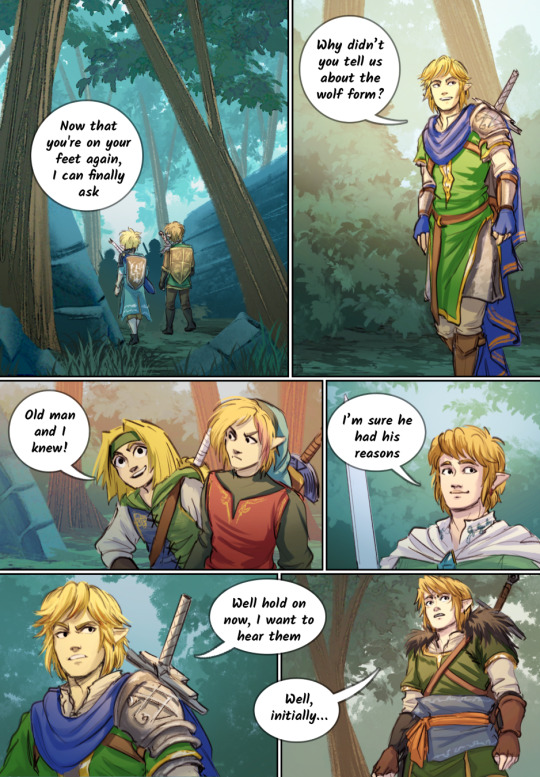
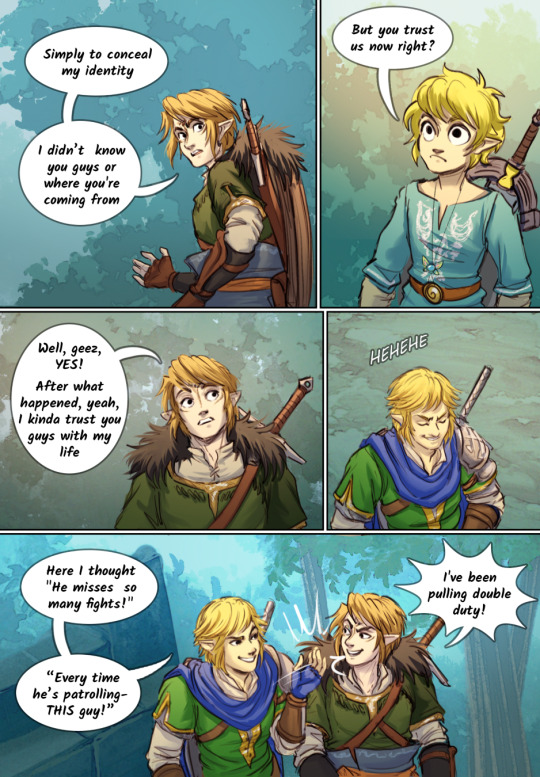
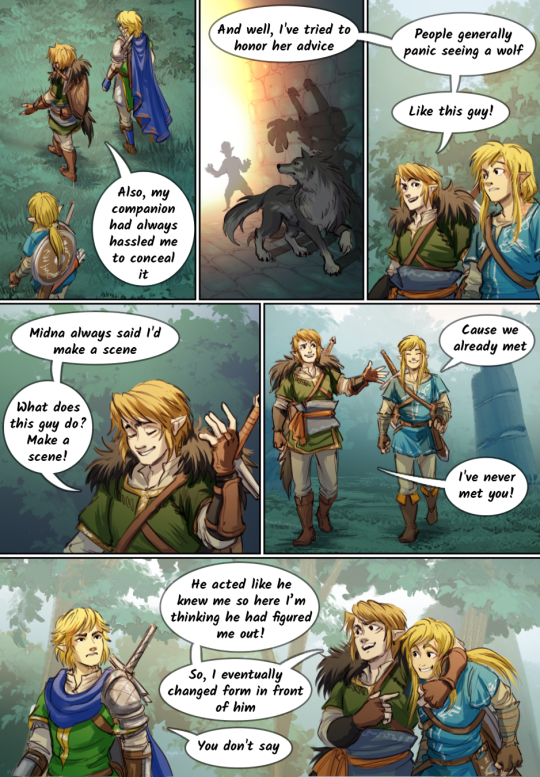
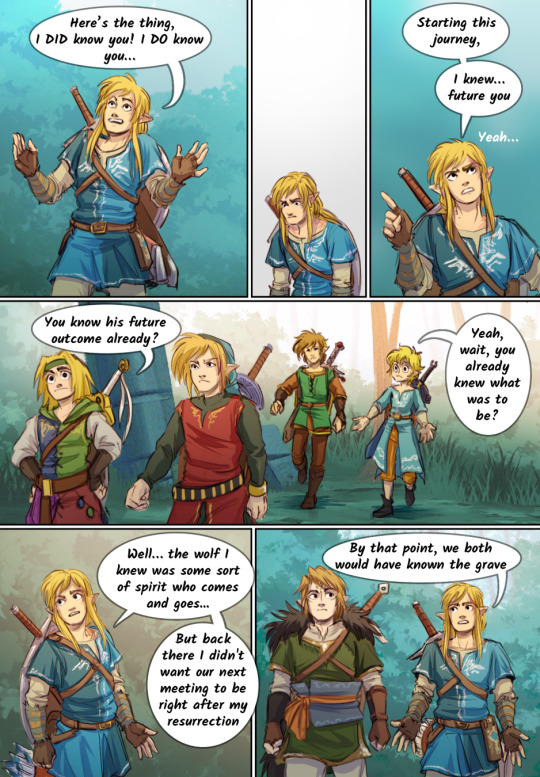
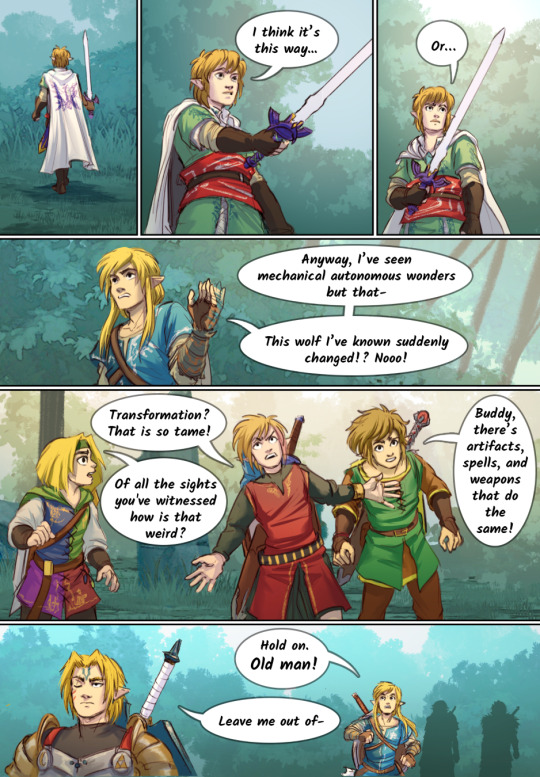
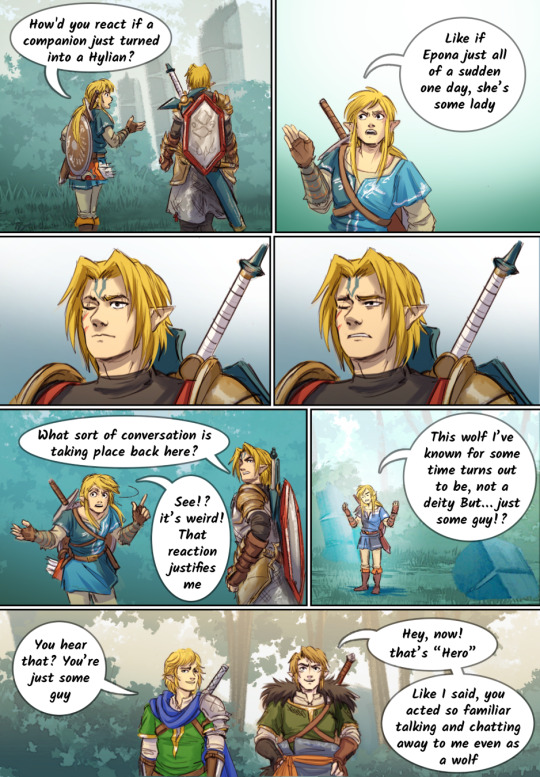
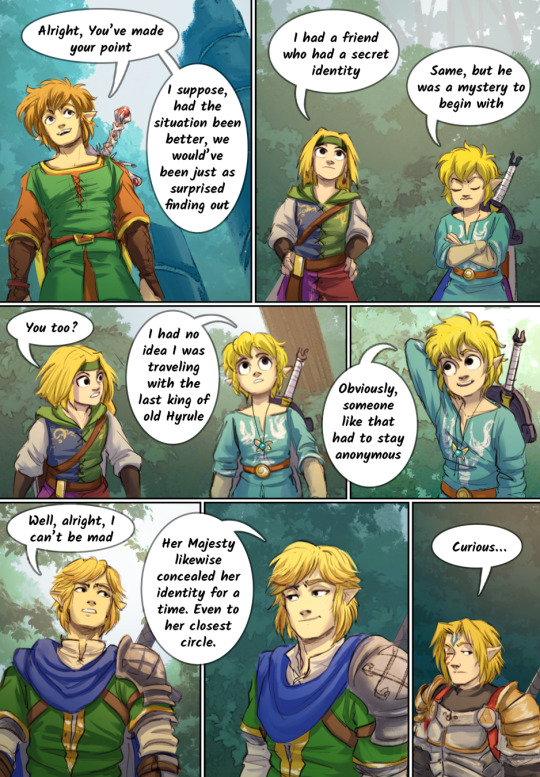
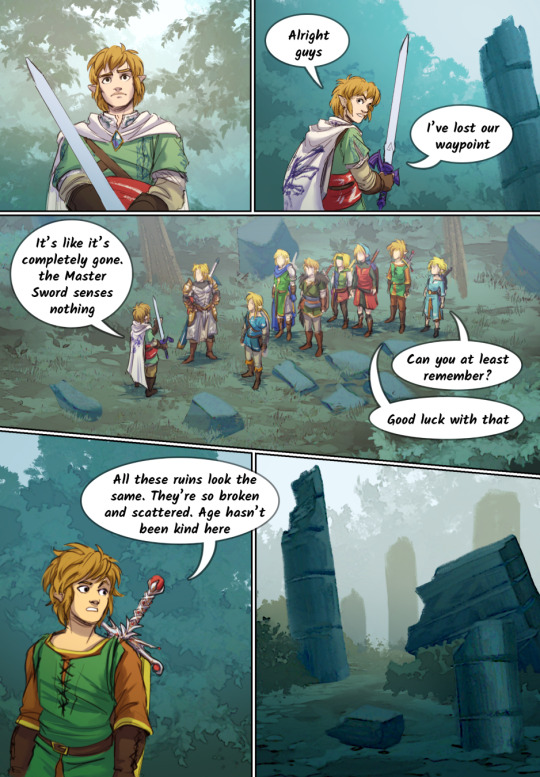
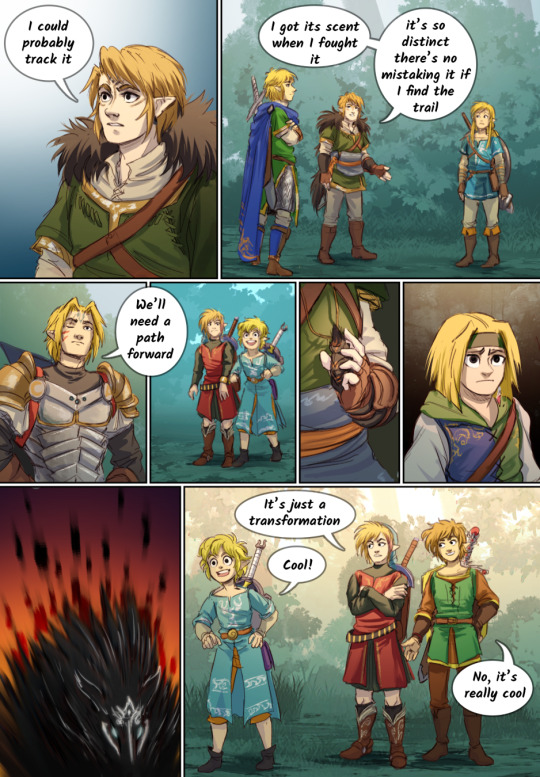
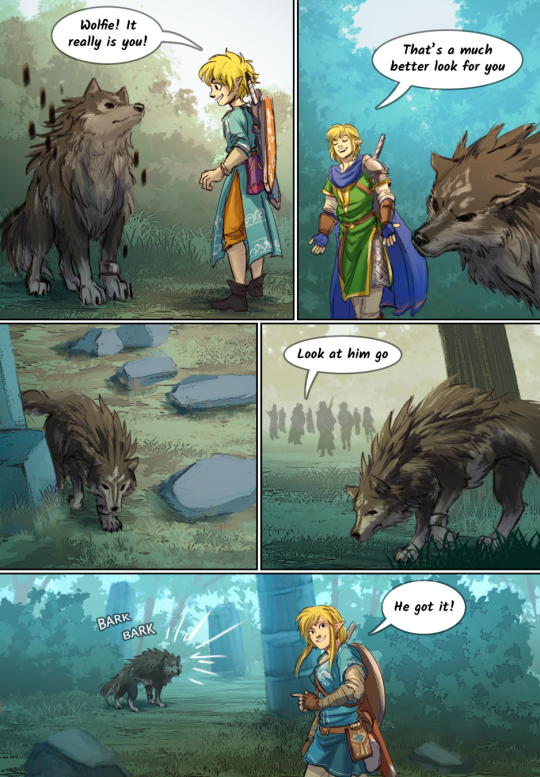
Moving Forward
<<Previous Next>>
Archive/ About / Linktree
#linkeduniverse#many of them have companions/allies who've had a secret identity#Having an outline of a LU prequel (How-they-met story) it's fun dropping hints about it.
7K notes
·
View notes
Text


♡ AMIHAN HAIR ♡
late valentines, i suppose? this has been a wip since last year but i finally got around to finishing it this week. i ran into a few issues that i almost gave up on it but it's been so long since my last upload and i wanted to share something before February ends so here it is! i drew the scalp textures from scratch in Photoshop (using one of the braids from GT as a reference) so it took ages. it's not perfect but i quite like it, hope you do too <3
inspo ♡
BGC
toddler-elder!
feminine frame
24 EA swatches + 17 extras, 15 EA swatches for the toddler and child versions
NOT hat compatible
all LODs, all maps
21034 polys
playtested :)
DOWNLOAD: Patreon (free) | SFS
as always, lmk if there are any issues!

#ts4cc#s4cc#sims 4 cc#sims4cc#ts4 custom content#ts4cc hair#ts4 maxis match#🖤#pls don't look at the back for too long#esp the blonde swatches#the lower braids are brighter than the rest#i realized that far too late 😭#uv mapping this thing was a bit of a nightmare and i already converted it for toddlers and kids#but if it bothers u pls lmk so i can tweak it a bit#also i just started experimenting with my previews#not sure if i like using renders but these ones took a long time so might as well use them#if i could just figure out how to do outlines in blender that don't look like ass and mimic the reshade comic.fx look i might like it more
2K notes
·
View notes
Text



Take a bow, when everything's done.
the fun thing about handwriting words instead of using font is that you can do the emotion thing easier. the unfun thing is inconsistent size and also not straight and also writing neatly is so troublesome.
#isat fanart#isat siffrin#isat comic#isat act 5#isat spoilers#phy-sat posting#best time to draw is clearly. when i should be asleep. so normal.#yes the outline stuff for the last panel is different from the panel itself. its also a reference. iykyk#actually im not waiting for anyone to get it im just saying it. its loops thing from act 6#something about how loop gave up on their wish and destroyed themself v siffrin giving up on their wish and destroying the world#loop whos steadily lost hope to the point of no return and how their plea to the universe is a plea of desperation crying and everything#siffrin who swings so much between hope and despair and finding new breaking points every time#and their plea to the universe is a plea of resignation and also just a sort of obligation and anger#xen draws stuffs
1K notes
·
View notes
Text

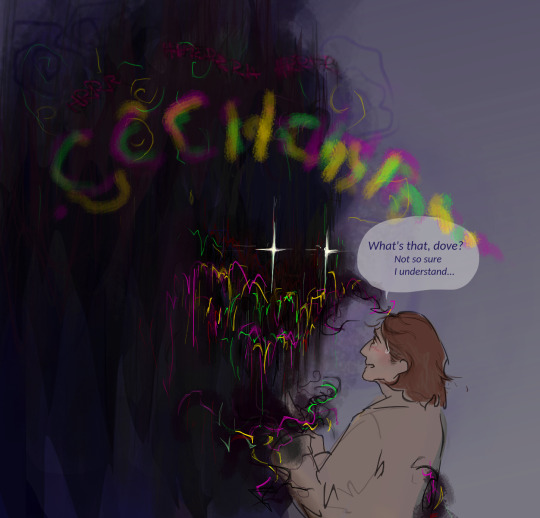

[1] Dream: *is eldritch* Hob: Hi, sweetheart.
[2] Dream: *growls* Hob: What’s that, dove? Not sure I understand…
[3] Dream (wetly): Cuddles…
#SORRY ABOUT THE REPOST#it had a tiny white outline...... ugh.#monsterfucktober#it's been TOO LONG#dreamling#my beloveD!!!!!!!#dream x hob#dreamling art#dreamling comic#mini comic#my art#*#totally forgot how to tag#creature#human x monster#dream of the endless#hob gadling
3K notes
·
View notes
Text

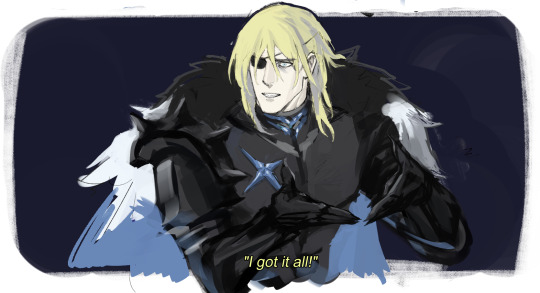
So I've been rewatching some Seinfeld recently
#the moment I saw this scene#I knew how to fix my artblock#sorry for the rushed quality#dimitri alexandre blaiddyd#fe3h#fan art#fire emblem#there's so much black in his design I should have probably outlined his hands#night art
4K notes
·
View notes
Text
What To Do When You Know Your Ending but Have No Clue How to Get There
congrats. you’ve unlocked the most ✨ cursed ✨ form of storytelling: knowing the destination but having zero map, no snacks, and one emotionally unstable protagonist riding shotgun.
aka: you know how your book ends. maybe even the Last Line™. but the middle? the plot? the scenes required to get there?
🦗🦗🦗
welcome to liminal writing hell. here’s what to do about it:
🚨 STEP 1: Write the ending anyway.
yes. even if you’re only on chapter three. write the ending now. not perfectly. not canon. just get it down while it’s burning in your brain.
this does 2 things:
gets you emotionally invested in where you’re headed
gives you a north star to align your scenes to
future-you will thank you when you're knee-deep in act 2, spiraling, and you need to remember what this mess was for.
🧩 STEP 2: Backwards logic it like a feral detective.
ask: what has to happen right before this ending can exist? then ask that question again. and again. until you’ve accidentally built a whole reverse-outline.
like:
✨ final scene: heroine stabs the love interest to save the world → she needs to know he’s the villain → she needs to see him do something unforgivable → she needs a reason to be in the same room as him when it happens → she needs to go to the city where he’s hiding → she needs to choose betrayal over loyalty
now reverse those like breadcrumbs through the forest of chaos.
🎯 STEP 3: Identify your mid-point emotional switch.
the best middles aren’t just “stuff happening.” they’re a turning point. a reversal. a Big Choice. often it’s the opposite of the ending.
ending = character sacrifices love midpoint = character believes love will fix everything
this sets up contrast + emotional stakes. the midpoint shows how wrong they are. the ending proves how far they’ve come.
no midpoint? no tension. build the middle to break them, then rebuild toward the finale.
🧱 STEP 4: Stack up your themes like Jenga blocks.
what are you actually saying with this ending?
if the ending is: “freedom comes at a price” then the story needs to explore:
what freedom means
who pays that price
how people deny the cost
how your protagonist learns to accept it
if your middle scenes aren’t touching these ideas? they’re just filler. start weaving the theme early, subtly, and repeatedly. make it hurt a little.
📦 STEP 5: Write “junk scenes” in the blank spaces.
not sure how they get from castle to climax? write a fake scene. not canon. no pressure. just vibes. let the characters mess around in the setting. argue. kiss. kill. eat soup. whatever.
you’ll learn what they want, what secrets they’re hiding, what tensions spark.
some of these junk scenes will turn out to be real. others will guide you to what needs to happen next. use them as scaffolding.
🧃 STEP 6: Accept that messy = forward.
you won’t always see the whole road. write the next landmark. write the next mistake. write the next bad scene and figure out why it doesn’t work.
knowing your ending is a gift. the rest? that’s the part where you dig.
you don’t need a perfect bridge. you just need enough planks to get across without falling into the river of I’ll-Fix-It-Later.
now go. write the scene where everything breaks.
P.S. I made a free mini eBook about the 5 biggest mistakes writers make in the first 10 pages 👀 you can grab it here for FREE:
🕯️ download the pack & write something cursed:
#writingtips#writingadvice#amwriting#storystructure#fictionwriting#writinghelp#writeblr#authorblr#creativewritingtips#howtooutline#thewriteedvice#wipwoes#thewriteadviceforwriters#writers block#how to write#writers and poets#on writing#writers on tumblr#writing tips#writing#creative writing#writing advice#writing help#how to write a novel#how to outline#writing process#story structure#plotting help#reverse outlining#writerblr
614 notes
·
View notes
Text
so, one aspect of catelyn which i think is underrated (certainly the biggest adaptation loss which nobody talks about) is her, let's say superstitiousness, or better yet, let's call it genre-savviness, being one of the few adult characters open to magic and the supernatural in this fantasy world. we first meet her in the godswood, home of gods which are not truly hers, yet she is still very aware of their power. when she and ned talk of the deserter he killed, he hopes he won't have to go with the nw to deal with mance rayder, but she has even more fear of that idea bc there are worse things beyond the wall than just wildlings. ned scoffs and says she's been listening to old nan too much, but she's right. we already know from the prologue that she's right! and here she is, understanding the genre of their world better than her husband, who was actually born and spent his earliest years in this northern land of deep magic, listening to old nan's stories. same with the direwolves, where she was uncomfortable with them at first, but later believed in them as guardians from the old gods even after robb had lost his own faith. and once again, we know she's right even if she doesn't know the evidence to back up her instincts, bc summer and shaggydog did not fail bran and rickon and robb was almost certainly a warg like his brothers. (perhaps making it more fitting that she's the one brought back as a fantasy vengeance monster, not ned and robb, the most unbelieving dead starks.) and in her 2nd agot chapter, everyone focuses on her ambition in wanting ned to agree to the hand job (pun intended) and sansa's betrothal, and while she does recognize the value of their daughter being a future queen more than ned does, that's only her stated argument bc she thinks it's rational enough for ned to listen to. (if ambitious matchmaking were as important to her as to her father she never would have made those frey betrothals fandom loves to blame her for.) in her own head there's a deeper urge driving her. she keeps thinking of the dead direwolf with antlers in its throat, an omen which filled her with dread from the first she heard of it, before robert's arrival, and thinking of it again is what makes her desperate to convince ned not to refuse robert. she had to make him see. and really, she's not wrong, as jon snow would say. the dead direwolf was an omen of ned and robert getting each other killed. it's just one of those misread portents, with no way of knowing the danger to ned was in his loyalty to robert, not conflict with him. BUT the next time she's dealing with baratheons, she knows exactly what she's talking about. it's catelyn, not brienne, who sees the shadow slaying renly, and explains that it was stannis who did that through some dark magic. with no way of knowing how it was achieved and no prior expectation that such a thing were ever possible, she realizes with no hestitation that stannis was guilty and that his red witch was capable of pulling this off somehow. really, the only instinct of the supernatural she's wholly wrong about is her insistence that varys gathered his knowledge through some dark enchantment. however, though that might offend varys, given his own personal experience with a sorcerer, i'd say it's a reasonable assumption without knowing the dude had children moving through walls everywhere like oversized rodents. and imo it just shows she had a healthy respect and awe for varys's power which most other characters lack.
oh, oh, and let's not forget that she also believed in the curse of harrenhal, from her own childhood and the stories old nan told her kids. "and every house that held Harrenhal since had come to misfortune. Strong it might be, but it was a dark place, and cursed. 'I would not have Robb fight a battle in the shadow of that keep,' Catelyn admitted." sure, that wasn't enough to save robb, but he did not die from the curse of harrenhal. that doom was meant for his enemies from tywin lannister to roose bolton.
#valyrianscrolls#asoiaf#asoiaf meta#catelyn stark#catelyn tully#this why i can't w talking abt how much better the northerners are for their supernatural setting#when w the exception of the crannogmen most of them understand their setting less than their southron 7-following lady of wf#people of the riverlands can follow useless gods and still not lose their belief in magic#and people who think it would have been cooler if robbwind or even ned took lsh's place are not just missing the point bc grrm#focused on catelyn as pov for a reason but bc thematically all the gods knew who was actually open to their power#everyone else was only interested in that stupid outline for starkcest shipping but i was most intrigued by cat going beyond the wall#happy tully tuesday!#(c)lsb
2K notes
·
View notes
Text

omianne wip from over a year ago that ill never properly finish (redraw of 'the other father' by mac conner)
#just slapped on some greyscale and a gradient overtop and called it a day.......i just finally want all my wips cleared😩#i dont have a wip folder so i just come across things and then im like ohh yeahhhhhhhhhh.......YOU........🫵🫵🫵#i havent been drawing anything bc im working on my curse-breaker oneshot and i finally finished the outline and its 16.7k words LMAO#gonna try not to stress too much about how well its written/editing since its just a oneshot...so hopefully itll be done soon#and im gonna do a comic to go along with it ofc...any excuse to draw curse-breaker older seb??? YES PLEASE🧎♀️🧎♀️#ominis gaunt#anne sallow#hogwarts legacy#ominis x anne#ominis#choccyart
1K notes
·
View notes
Text


I saw @soappbar post and immediately thought of these two. The shit post was too good to pass up on 😔😔😔
Original is @ _sadeleine on tiktok
#dont you hate it when your kohai ruins your fit check ://#if someone knows how to get that nice outline text pls tell me i cant be drawing the outline each time i need it pls i beg#the great king#oikawa tooru#kageyama tobio#milk#haikyuu
491 notes
·
View notes
Text

getting into both of these games at the same time is pretty funny
#I considered making both of them dark castles but from what I understand isat has a much happier ending (after much of the horrors)#the big difference is that in one the main character(s) takes absolutely no responsibility#and in the other they take WAY TOO MUCH#also “caused” by the main character in sif’s defense he did not know that would happen (and it wasn’t just his wish)#yes I’m only in act 3 but I have been spoiled for a chunk of stuff#time fuckery in mw’s case is the non-linear narrative#though there is a ton of time travel fix it fanfiction#in stars and time#isat#mouthwashing#sorry if the text is hard to read idk how to make it outlined :(#…do I need to tag isat spoilers#whatever sure#isat spoilers#I don’t think I need a mw one#mid-act 5 update: they both have hallways that are Longer than you remember them being#and dreamlike fucked up journeys towards the end
714 notes
·
View notes